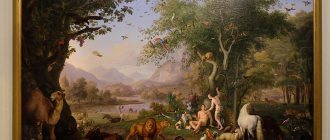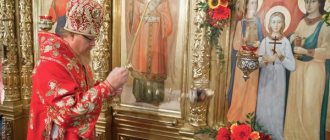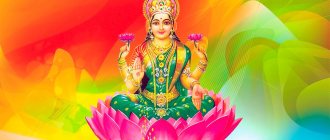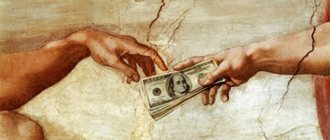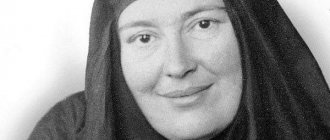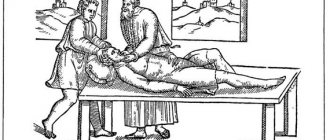Living archetype of the black mother goddess
The veneration of the Black Madonna is still alive, less widespread than in earlier times, but still alive. And as a living force, for me personally the archetype of the Black Madonna played a huge role.
When an energy unknown to me began to come to me, which we later called Mother energy, the first thing my attempts to understand energy led me to was the Black Madonna - one of the few archetypes of black mother goddesses alive to this day.
The Black Mother Goddess was known in many cultures that have declined in our patriarchal times. And blackness has become a symbol of something terrible and disgusting - a great evil that must be avoided at all costs.
I, too, when I first came across this concept - the Black Madonna, was confused, the blackness of the image was completely unexpected and incomprehensible.
But after a while, its meaning was revealed and, strange as it may be to talk about blackness, it shed light on the denied and hidden half of my life and personality.
Black Madonna - a black-faced image of the Mother of God in the Catholic Church
Three different images of the Black Madonna
Yes, the Black Madonna managed to appear and survive not in some sect, but in the Christian Catholic Church.
Of course, traditional Catholicism denies its original blackness and says that the image of the Black Madonna is the image of the Virgin Mary with Jesus Christ in her arms, and they have turned black over time, from the smoke of burning candles.
But this does not prevent the Black Madonna from existing and carrying her power. And people feel this power and go to the Black Madonna, even if they do not always consciously understand its meaning.
What were the Black Madonna statues made of?
Initially, figurines of the Black Madonna were made from dark types of wood, such as black ebony or black stone.
Very few such figurines have survived to this day, since for domestic reasons or as a result of wars and revolutions fires and destruction occurred in churches. And later copies of the disappeared sculptures were made from more accessible, light-colored materials and were blackened on top.
Therefore, when modern scientists examine the sculptures of the Black Madonnas, they often discover that the figurines were made of light wood. Such figurines usually date back to the last two centuries.
From this, scientists conclude that the blackness of the figurines is simply the result of the effects of time and candle smoke. But this theory crumbles before the fact that in many figurines only the face and hands of the Madonna have darkened to black, and for some reason the elements of her clothing and jewelry have not succumbed to smoke and antiquity to blackness.
For the modern tradition of Catholicism, it is completely inappropriate and unacceptable to say anything other than that the Black Madonna figurines are an image of the Virgin Mary, darkened by time. The Catholic Church cannot destroy this black image, since the Black Madonnas attract millions of pilgrims, and it somehow needs to be included in its tradition.
The trend towards disappearance of Black Madonnas
But there is still a tendency towards the disappearance of Black Madonnas.
For example, the writer Fulcanelli, in his book “The Mystery of the Cathedrals,” published in 1926, wrote about 2 Black Madonnas in the French city of Chartres:
“Black Virgos are rare these days. We will mention only those of them that are quite well known. In this regard, Chartres Cathedral is the richest: it has two of them.
One enthroned, expressively called “Our Subterranean Lady,” is in the crypt, and on the base of this statue is the inscription—Virgini pariturœ; the other, the so-called “Our Lady at the Column” is outside, in a niche in the form of flaming hearts.
The Underground Virgin of Chartres is one of the oldest pilgrimage sites. According to the stories of local medieval chroniclers, at first it was an ancient statue of Isis, “sculpted before Jesus Christ.” However, the current sculpture dates from the very end of the 17th century.”
In modern times, almost a century later, only one Black Madonna was known to exist at Charts Cathedral.
And in 2021, Chartres Cathedral opened after a ten-year restoration, but without a single Black Madonna - the Virgin of Chartres became light and ruddy.
Many visitors to the cathedral were outraged and even shocked by what happened. The New York Times published an article on this news entitled: “Controversial Restoration that Erases the Past,” and other news headlines on this topic can also be seen on the Internet, such as: “The Death of the Mystery” or “The Desecration of Chartres.”
The Black Madonna of Chartres has disappeared, and this is not the first or last such case.
Black Madonna of Chartres
Virgin of Chartres after restoration, 2021
But we can still thank the Catholics for the fact that they, albeit with reservations, were able to preserve the Black Madonna to this day, even if not in all churches.
Calling the Black Madonna the Virgin Mary is quite acceptable and correct, because the Virgin Mary is one of the beautiful incarnations of the Mother Goddess - the Mother of all things, the fertile earth, who gave the bodily shell for the divine consciousness of Jesus.
Miracles
There are a great many such miracles. People write them down in a special book dedicated to the deeds of the miraculous icon. The book, which has been updated for 6 centuries, contains thousands of testimonies. The entry in it is made under the kiss of the cross and is a testimony before God and people. Here are just a few examples of miracles: One young couple was unsuccessfully treated for infertility in various medical institutions in Poland. But they were unable to conceive a child. The doctors said there was no hope. Seeing their suffering, their grandmother advised them to go to the Czestochowa Icon. Imagine the surprise of the doctors when the woman came for examination, being several weeks pregnant. Zuzya was born on January 4, 2012, and her great-grandmother wrote about this story in a book. “Our Lady often supports families and has earned the title of Queen of Families,” says Pauline monk Father Melcheor Krulik. For many years now he has been responsible for maintaining the above-mentioned book of miracles. 2010 On March 7, Evelina Tseslyar’s entry appeared in the book. American doctors gave the woman a maximum of two weeks to live after her body, consumed by the disease, stopped accepting food and even water. She was in a state of critical exhaustion, but neither her boyfriend Barek Machnik nor her friends left her and continued to pray, although hope was fading. “I’m an ordinary person and a girl far from exalted, but there, in America, when the priest came to essentially my last confession, I suddenly heard a voice that said: “Now don’t be afraid, child, everything will work out!” For some reason I decided that this was the voice of the Mother of God of Yasnogóra and She was calling me to her,” the monk retells the girl’s story. The girl was urgently sent to Poland. In front of the icon of the Mother of God, complete healing occurred. There are relevant survey materials confirming this. And a year later, on May 5, 2011, Evelina arrived with her husband and their child under her heart, just to witness this incident. One of the most famous cases is already 35 years old. Yanina Lyakh, then a 29-year-old mother of two children, had been unable to move without the help of crutches for 5 years. She was assigned the 1st group of disability with the right to guardianship over her. More than 60 pages of medical report confirmed the deplorable condition of Mrs. Yanina. After many years of examination, she was given a terrible diagnosis - multiple sclerosis, which threatened the woman with blindness and complete paralysis. The husband got drunk and left home. The woman despaired; in a prayer to the Mother of God of Czestochowa, she asked for death for herself, so as not to torment the children, so that the Mother of God would take care of them. In a dream, the Virgin Mary told her to come to Yasnaya Guru on January 28, 1979. Yanina went, as usual, with crutches, moving her legs with difficulty. Approaching the Czestochowa Icon, she suddenly felt that she was standing. I tried to take a step and it worked... Mrs. Yanina’s crutches remained in the monastery among other evidence of healings left at different times. Three different doctors examined Mrs. Jadwiga. Their surprise knew no bounds. Five times after that she went on a walking pilgrimage from Warsaw to Jasna Góra. She was here this year too - on January 28... Melcheor Krulik emphasizes: an interesting fact is that it is not the Yasnaya Gura itself as a place of prayer that works miracles, but the icon. After all, a lot of evidence was brought by people from all over the world. People turned with faith to the Mother of God of Czestochowa and things happened to them that could only be explained by a miracle.
Black Madonna in Europe
The figure of the Black Madonna can be found in almost every country in Europe, but most of them are in France, Spain, Germany and Italy.
In English Wikipedia you can read:
“There are about 400-500 Black Madonnas in Europe, depending on how they are classified. There are at least 180 Black Maidens in France, as well as hundreds of non-medieval copies."
Also on Wikipedia there is a list of Black Madonnas by country, but personally I have seen Black Madonnas in many temples not listed in these lists. Therefore, I think that it is quite difficult to say about any exact number of Black Madonnas.
Judging by the prevalence of Black Madonnas in France, Spain, Germany and Italy, it can be assumed that this cult originated in these countries or in one of them.
And then it began to spread throughout neighboring European countries and other countries of the world that were under the influence of these countries. For example, the Black Madonna is in Latin America, the Philippines, Algeria, and Malta.
Black “Patroness of Cuba” from the Church of the Holy Trinity in Havana, copy from the St. Petersburg Museum of the History of Religions
Icons with the Black Madonna
Some icons of the Mother of God are also classified as Black Madonnas, such as the Czestochowa Icon of the Mother of God in Poland or the Feodorovskaya Mother of God in Kostroma.
These icons date back to the Middle Ages and they are famous for their miraculous power, like many other icons of the Mother of God. But according to my feelings, these icons are really just darkened by antiquity and do not belong to the cult of the Black Madonna.
But if someone sees a black goddess in the dark face of the icons of the Mother of God, then why not, let her be the Black Madonna and let her remind people of the most sacred.
Our Lady, Señora, Lady or My Mistress
In general, the Mother of God enjoys great respect in Europe; she is called in French Notre Dame - Our Lady.
For example, the cathedral named after her in Marseille is called Notre-Dame de Marceille, which can be translated literally as “Our Lady of Marseille” or, as is more commonly translated, “Our Lady of Marseille”.
In Spanish they call her Nuestra Señora - Our Senora, in English Our Lady - Our Lady.
The word Madonna is of Italian origin and is translated as My Lady - Mia Donna.
An inexhaustible stream
The monastery at Jasna Góra, in terms of its significance for Poland, can probably be compared with the Trinity-Sergius Lavra - the greatest Orthodox church in Russia. So great is the flow of believers seeking a miracle from Our Lady of Czestha, and so great is the number of those who receive this miracle. Therefore, pilgrimage trips, and sometimes walking trips across the whole of Poland to Jasna Góra, are a revered tradition in Poland. “Matko Bosko Częstochowsko!” - can be heard throughout Poland, regardless of gender and age. The name of Our Lady of Czestochowa is on everyone’s lips. In 1991, thousands of Catholics and Orthodox Christians from the USSR came here to see John Paul II. This became one of the symbols of the fall of the Iron Curtain. The Czestochowa icon attracts not only Catholics and Orthodox Christians, but also representatives of other faiths. This does not surprise the Pauline monks at all. This has been happening for a long time. People receive what they ask from the Mother of God, and the path to her is always open to everyone. There are cases when a convinced atheist, drug addict, thief and libertine took the path of faith after seeing the icon. It is known that one such person once came with friends for a completely different reason - just to take a walk and have fun. Someone suggested “just go have a look.” They arrived just in time for the traditional ceremony of opening the icon for viewing by believers. And the moment the young man saw the image of the Mother of God, he could not hold back his tears. He cried. After the ceremony, he was afraid, but still went to confession, and when he came out, he called his mother and asked for forgiveness for all the grief that he caused her with his behavior (before that, the woman even wanted to leave home because of her son’s antisocial behavior!) This guy is a normal person now. Stealing was replaced by work, drugs disappeared on their own.
Black Madonna in the Monastery of Montserrat near Barcelona
In the monastery of Montserrat, near Barcelona, where we had the opportunity to visit, the Black Madonna, in addition to Señora, is affectionately called Moreneta, which translated from Catalan means Dark Woman.
Residents of Catalonia honor her as the mother and patroness of all Catalan lands and consider her “the pride of our people.”
Montserrat Monastery is located high in the mountains, the peaks of which have an unusual round shape, similar to fingers, adding a special charm to this wonderful place.
Montserrat monastery in the mountains
Mountains and the cable car building at the Montserrat monastery
The Black Madonna of Montserrat is located in a temple high above the ground; you can climb up the stairs to it, after standing for some time in a queue of pilgrims coming from all over the world.
For preservation purposes, the Black Virgin was placed behind glass, and a small window was made near her hand, through which the statue can be touched.
The Black Madonna of Montserrat is one of the few Black Madonnas that you can touch.
Touching Moreneta
The atmosphere of the temple and the energy of the Black Madonna of Montserrat
The atmosphere of the temple itself did not particularly impress me, since there are too many people and bustle, but the statue of the Black Madonna itself carries amazing energy.
I had the feeling that it was not me touching a solid wooden sculpture, but that this living embodiment of love and tenderness was touching my hand.
It was a very soft, gentle energy that created a feeling of piercing kinship, it occurred to me: “My dear!”, and waves of gratitude began to spread throughout my body.
A feeling of peace filled my entire consciousness, there was no longer any need to rush anywhere or worry about anything, it was as if I had returned home.
The Black Madonna of Montserrat is the living embodiment of the energy of the Mother in its deepest hidden meaning and form.
A figurine of the Black Madonna of Montserrat in the window of a souvenir shop at the monastery
Excursions to Mount Montserrat to the Black Maiden
A trip to the reserve, to Moreneta, is the number 1 excursion hit in Barcelona. You can always organize it yourself. If you know the area and know at least a little Spanish. But, of course, it is much more comfortable and educational to go to Mount Montserrat with a tour. Especially individual, when everything will be told, shown and will not allow you to get lost or miss something important.
The route “Soul of Montserrat Mountain” is one of the most interesting on Tripster. Price 175 EUR (from 1 to 4 people), duration - 6 hours.
You can go further and book a tourist route to each of the peaks of Montserrat. Or even try to master them yourself. But this is rather the topic of the next article. Now it is more important for us to find out how the cherished dreams of those who have already been lucky enough to visit Moreneta come true.
Origin story of the Black Madonna
Monastic orders
The Black Madonna arose during the Middle Ages, when separate monastic orders were formed around the Catholic Church, such as the Benedictine, Cistercian and Templar.
These orders conducted their own scientific and religious research, they actively studied ancient manuscripts, they were engaged not only in religion, but also in architecture, music, painting, etc.
Benedictine monasteries, for example, were the main centers of culture in Western Europe, and almost all the outstanding scientists of that time came from the abbey schools.
Therefore, the birth of the Black Madonna is associated precisely with the monastic orders, which could well have created a new cult based on the acquired ancient knowledge and the existing symbols of Catholicism.
What does Madonna's black color mean?
Black is the color of fertile soil in which the seed of life can grow; it is the color of the cosmic night sky, the home of myriads of stars.
The black color symbolizes primordial matter, the very materiality of the world.
The current Pope Francis has called for “a church capable of rediscovering the womb of mercy,” that is, Francis is talking about the maternal nature of love and a church that can lead people to this love.
The mother's womb, both now and during the Middle Ages, was absolutely black. And to express this blackness symbolically in Madonna’s complexion looks quite natural.
The black reproductive womb is the world of peace, security and abundance of the Mother. Black color is the color of the hidden secret of birth and death, the color of deep wisdom and primordial creativity.
Blackness and blackening in alchemy
During the Middle Ages, the art of transformation - alchemy - was extremely popular.
From an alchemical point of view, the color black symbolizes the primary chaos, where the seeds of all things are mixed, from which everything and everyone comes, and which is the primary material and the initial step for all alchemical transformations.
In addition to the material alchemy that has become famous in our time - the transformation of lead into gold, there was a spiritual or internal alchemy, which dealt with the transformation of the soul to unite with the divine.
The first stage in the spiritual alchemical process was called "Blackening" - this stage meant the blackness of death and rotting of old false views about oneself, it was the stage of conscious integration of the soul back into materiality and the body.
The Black Madonna reflected this absolutely necessary step with her skin tone, as if giving life to this process of transmutation of the spirit.
Ancient cults of the mother goddess
In addition to monastic orders, the history of the emergence of the Black Madonna is associated with the cults of the Mother Goddess of different nations that preceded Christianity, suggesting that the Black Madonna became the incarnation of some ancient goddess of fertility.
In Europe in the pre-Christian era, various mother goddesses were widespread, for example, the Egyptian goddess Isis, the Phrygian mother of the gods Cybele, and the mother goddess of Asia Minor Artemis of Ephesus.
Cult of the goddess Isis
Any of these goddesses could become the prototype of the Black Madonna. But researchers of the cult of the Black Madonna most rely on the connection of the Black Madonna with the Egyptian goddess Isis, perhaps because Isis is depicted sitting on a throne with the baby Horus in her arms, as most Black Madonnas sit on a throne with a child.
Isis was called the “Virgin Mother” and “Queen of Heaven,” just like the Virgin Mary today. The color of Isis was considered black, and spells concerning Isis began with the words “My kingdom rests on that which is extremely black.”
The cult of Isis, considered the patroness of healing and female fertility, was widespread throughout the Mediterranean and was strong in the early Christian era.
When the Christian tradition began to reject ancient pagan beliefs, the image of Isis, of course, could be transformed into the image of the Virgin Mary.
Figurines of the goddess Isis holding the baby Horus in her arms in the Cairo Egyptian Museum
Cult of the goddess Cybele
In addition to Isis, the Phrygian goddess Cybele was also called the Mother of the gods.
The Phrygian state was located on the territory of modern Turkey; due to its geographical proximity, its cult in Europe was also strong.
The goddess Cybele also has a connection with the color black; her symbol was a black stone, possibly a meteorite. Cybele was depicted sitting on a throne, her feet standing on a footrest, a cubic base, just like Isis, as well as all the Black Madonnas who are depicted in a sitting position.
The Great Mother of the Gods Cybele is accompanied by majestic lions, and in her hands she may have a cornucopia or a symbol of vitality and fertility - a pomegranate. According to legend, Cybele ordered the elemental forces of nature and carried fertile power.
Statue of Cybele enthroned with a lion and cornucopia at the Getty Museum, 50 AD.
Cult of Artemis of Ephesus
Another goddess associated with blackness and whose cult was widespread at the dawn of Christianity in Europe is Artemis of Ephesus.
Artemis of Ephesus was depicted as black and multi-breasted; she was revered as the patron goddess of childbirth.
Looking at her statue, one gets the feeling that it is Mother Nature or Mother Earth in human form, ready to generously feed all her children.
Statue of Artemis of Ephesus, Roman copy
Cult of Mother Matuta
In addition to those borrowed from neighboring peoples, Europe also had its own local goddesses of motherhood and fertility.
For example, in Italy there was a local Italic goddess, Mother Matuta. She was revered as the goddess of every birth and was depicted as a woman sitting on a throne with a child or several children in her arms.
There is one statue of Matuta without children, where she holds a pomegranate in her right hand - a symbol of fertility, and in her left hand she holds a dove. The dove, as a symbol of the Holy Spirit, which is found very often in modern Christianity, is obviously also a legacy of ancient religions.
Mother Matuta from the Archaeological Museum of Florence
Mother Matuta from the Archaeological Museum of Santa Maria Capua Vetere
Looking at the variety of goddesses of motherhood and fertility in pre-Christian Europe, it is difficult to say unequivocally that the Black Madonna is associated with only one of them.
It is possible that this is so, or it is possible that she became just a single embodiment of all of them at once, a collective image of the black fertile mother earth and mother cosmos, the mother of gods, people and the entire animal and plant world.
Symbols embedded in the image - what does the Black Madonna represent?
And now let’s return to the monastery of Montserrat and the Black Madonna of Montserrat in order to examine in detail the image of the Black Madonna and understand the symbolism that is inherent in it.
Black Madonna of Montserrat
What we see:
— The Black Madonna of Montserrat sits in rich golden robes on a luxurious throne and holds her son on her lap. — The feet of the Black Madonna are shod and rest on a pillow that serves as a footrest. — There are crowns on the heads of mother and child. — The mother holds a ball in her right hand and hugs the child with her left hand. — The boy makes a blessing gesture with his right hand and holds a pineapple in his left hand. — The complexions of the mother and child are black.
In general, the image of the Black Mother with a child in her arms is a reflection of the structure of our universe or the internal structure of a person.
The ball that Mother holds in her hand is a symbol of the universe. The sphere, as an ideal form, represents the perfection of the world. The Universe in the hands of the Mother is a symbol of her ownership of the world and her supreme power over it.
The supreme power and high position of the Mother are also indicated by her golden clothes, crown on her head, footrest and throne. Queen of Heaven is a very appropriate title for the Great Mother.
A child in a mother’s arms is her son; he represents all of humanity in general and each individual person in particular.
The mother's hand hugs and supports the child - this means that the Mother protects and protects humanity and wishes it well, since it is her fruit.
The child wears the same crown as his mother, which further emphasizes his great heritage. And the black color of his skin also indicates that he is inseparable from her, as material as his black Mother.
In the boy's hands, a pineapple is a fruit symbolizing the eternal life and well-being that a person has when he is in his place - sitting on her lap, surrounded, inside and in the center of the Great Mother enveloping him.
The mother sits on the throne, and her lap is the throne for her son. In Christianity, the Virgin Mary is called the throne of Jesus, and her knees are called the Throne of Wisdom.
The word "throne" in Latin sounds like "cathedra" - department, which gave rise to the name - Cathedral. Cathedrals in medieval Europe became city centers, and this is still the case today.
And according to the meaning of the word, we can say that these are “Cathedrals of the Throne”, that is, cathedrals where the Mother Goddess sits on the throne - the source of life, who undividedly owns and rules over the perfect world, providing protection and giving eternal, grace-filled life to her beloved child - humanity .
Most Black Madonnas are depicted with a child on their lap or in their arms. “A boy in the arms of a woman” - this symbol can be attributed to the period of the emergence of the first human civilizations, where humanity was just beginning to learn to be a king, king, ruler of nature.
Therefore, it is depicted as a little boy who has the potential to become an adult, wise king in the future.
Black Madonna Pilar in the Church of the Immaculate Conception in Barcelona
About the miraculousness of the Black Madonna
I first learned about the Black Madonna Monastery near Barcelona from an article in a magazine that said that women who wanted to get pregnant went there.
Now they say that people turn to the Black Madonna for help in realizing absolutely any desire.
There is a special room in the cathedral building, where returning grateful pilgrims bring symbols of fulfilled desires - children's toys, wedding dresses, no longer needed orthopedic accessories, etc.
Montserrat Monastery is thriving and is visited year-round by thousands of people from all over the world. Thanks to the Black Madonna, it became a spiritual symbol and religious center of Catalonia.
The Black Madonna of Montserrat can be seen not only in churches in Catalonia, but also in local shops or cafes; her figurines are placed as a symbol of protection and support.
A figurine of the Black Madonna of Montserrat in the window of a street cafe in Barcelona
Features of the Montserrat Monastery
The first mention of the Montserrat monastery dates back to 880, and in 1025 a Benedictine monastery was founded here. And, as befits a Benedictine monastery, active educational and educational work is carried out here.
There is a museum on the territory of the monastery where exhibitions of the monks’ works are held. There is a rich library with handwritten medieval books.
The monastery is also famous for its children's music school, which was founded in the 13th century and is one of the most ancient music educational institutions in Europe.
Every day at one o'clock in the afternoon, a hymn to the Black Madonna is performed in the temple by a choir of boys studying at the music school at the monastery. This is a very beautiful action that makes visiting the monastery even more amazing.
Image of the Black Madonna surrounded by musician monks in the Montserrat monastery
A seething, active life always unfolds around the Black Madonnas, since they carry precisely the creative creative force, the impulse of fertility and diversity, and the fertile maternal atmosphere of all-acceptance.
Photos and quotes from Montserrat Monastery
History of the Czestochowa Shrine
The miraculous icon attracted many pilgrims and novices to the monastery. But there were also those who were jealous of the wealth and glory of the monastery. Among them were opponents of the Catholic faith - the Czech Hussites. They didn’t care which icon they prayed to—the criminals were only attracted by the opportunity to make money. They entered the temple, killing its defenders, and destroyed the holy place. Among the stolen church property was the Czestochowa Madonna. But when the robbers tried to take away the trophies, the cart with them could not even move. Angry, one of the thieves threw the image to the ground, breaking it into three separate parts. At the same time, the faces of Jesus Christ and the Mother of God miraculously remained unharmed. And when another Hussite hit the relic with an ax, the mercy of the Lord was exhausted - and a terrible punishment overtook the blasphemers. One of them had a withered arm, the second was torn, and many fell dead. Only then were the monks able to pick up parts of the icon, wash them and send them to Krakow for restoration.
After this, the monastery in Jasna Gora was rebuilt and strengthened. It turned into a real fort - and this turned out to be very useful during the Polish-Swedish war. In 1655, an army of three thousand soldiers, led by Miller, entered the castle walls. But the abbot of the monastery, Augustin Koretsky, decided to defend the holy place with all his might. And the Most Pure Virgin did not leave behind brave warriors - monks, several knights and a detachment of fighters, whose number did not exceed three hundred people, were able to defeat the superior forces of the enemy. This became the turning point of the war.
As a token of gratitude for the miracle, monarch Jan Kazimierz recognized the Madonna of Częstochowa as guardian and queen of Poland. From now on, all copies of the icon had to be decorated with a royal crown, although the public coronation took place only in 1716.
Other famous Black Madonnas
Montserrat Monastery is one of the many places in Europe dedicated to the Black Madonna, it is absolutely beautiful, but there are other equally wonderful places. I'll highlight a few that are particularly noteworthy:
Sanctuary in Einsiedeln Abbey, Switzerland
In this largest pilgrimage center in Switzerland, you can get acquainted with the Black Madonna of Einsiedeln , who is called here “Our Dear Lady of Einsiedeln”.
The original statue of the Black Madonna, which was at the founding of the monastery in the 9th century, burned down in a fire in 1465. It was replaced by a new wooden statue, which remains in the monastery to this day.
During the restoration of the temple in 1803, the figurine of the Black Madonna was cleaned to a flesh color, since the copy was made of light wood. This change met with great displeasure among the population, and Madonna was again painted black.
Black Madonna of Einsiedel
A special feature of the Black Madonna of Einsiedeln was her bell-shaped dress, which she received at the end of the 16th century. Since then, there has been a tradition of dressing the Black Madonna in dresses of various colors according to the liturgical period.
An exhibition at the Swiss National History Museum in Zurich in 2021 featured part of her unique wardrobe of 17 dresses, from the oldest surviving, an angel dress from 1685, to modern gifts from Korea and India.
Collection of Black Madonna dresses on display in Zurich
Church of the Grace of God in Altotting, Germany
This church is called the Heart of Bavaria; in the last 500 years, despite its tiny size, it has become a significant place of pilgrimage in Germany, a place of worship of the miraculous Black Madonna of Altötting .
She is famous for her healing and protective powers, and is surrounded by many legends and stories of healing.
For example, in 1489, one of the city residents’ three-year-old son drowned in a stream. The grief-stricken mother brought the lifeless body of her child to the altar of the Black Madonna and began to pray to her for a miracle. And a miracle happened, the child was resurrected, and they say he later became a priest.
In 1945, Anglo-American troops bombed Bavaria, including Altötting, but not a single bomb fell on the chapel or the buildings around it.
Pilgrims walk around the chapel with prayers; here you can see abandoned crutches and various orthopedic devices of those who were healed.
Black Madonna of Altötting
Temple of the Black Madonna in Tindari, Sicily, Italy
The Black Madonna from the small town of Tindari is called the Sicilian Black Madonna . It is believed that it was made in Constantinople around the 8th-9th centuries.
After another Arab attack on Constantinople, the statue ended up on a ship, which during a strong storm washed up to the coast near Tindari.
The sailors gave the statue to local monks and at first it was kept in a small chapel at the highest point of Cape Tindari, and later in 1549 a large beautiful temple was built for it.
Sicilian Black Madonna
Many pilgrims visiting the Sicilian Black-faced Virgin believe in her miraculous powers. It is said to help women suffering from infertility and gynecological problems.
The Black Madonna of Sicily has a very characteristic and original long face, and under her throne is the inscription “Nigra Sum Sed Formosa” - a phrase from the Song of Songs of the Old Testament meaning “I am black, but beautiful.”
Chapel of Our Lady of Rocamadour, France
It is known that the statue of the Black Madonna appeared in Rocamadour in the 8th century, but the statuette that stands in the chapel now dates back to the 12th century.
This is one of the most ancient statues of the Black Madonna, it is roughly carved from wood, which further emphasizes its antiquity.
Black Madonna of Rocamadour
The Black Madonna of Rocamadour became a famous pilgrimage site in 1166. Many kings and queens, dukes and duchesses, counts, bishops, lords, prominent and ordinary people came to look for a miracle in Rocamadour.
Rocamadour is located on a rocky plateau, and the chapel stands on top of one of the rocks, 216 steps of stairs lead to it. This path up to the mountain sanctuary has become literally ritual for pilgrims, 1.5 million of whom still come to the Black Madonna of Rocamadour every year.
In the 12th century, a collection of 126 tales of the miracles of the Black Madonna of Rocamadour was compiled.
In these stories, she healed the sick and insane, punished criminals, threatened and converted those who disrespected her, raised dead children, freed captives, protected sailors, and helped women conceive and give birth.
Holy House of Loreto, Italy
The Black Madonna of Loreto is known far beyond the small Italian town of Loreto.
Copies of the statuette of the Black Madonna of Loreto can be found in churches in many cities not only in Italy, but also in other European countries.
Black Madonna of Loreto in the Church of San Pantalon in Venice
The holy house of Loreto became a popular place of pilgrimage in the 13th century. The modern statue of the Black Madonna that can now be seen there was only made in 1922, after the original statue was destroyed in a fire.
The Temple of the Black Madonna of Loreto is the most famous church in the Marche region, with approximately 4 million visitors every year.
Expectant mothers often come to Our Lady of Loreto to pray for the protection and blessing of their children and families.
Basilica of Maria Bistrica, Croatia
The Black Madonna of the Croatian village of Maria Bistrica is called the "Queen of Croatia" and became a symbol of national identity in the late 18th century.
of the Black Madonna Maria Bistrita is believed to have been carved in 1499.
The basilica, which houses the Black Madonna, was rebuilt several times over the years and increased in size to accommodate the many thousands of pilgrims who flocked to Maria Bistrita for the miraculous blessing of the Mother of God.
Black Madonna Maria Bistrita
Le Puy Cathedral, France
This sanctuary of the Black Madonna is located in the French hill town of Le Puy-en-Velay. Climbing one of the city's hills leads to the cathedral of Notre-Dame Le Puy - Our Lady or Our Lady of Le Puy.
This cathedral has an interesting history:
Once upon a time, on the top of the hill there was an ancient Celtic sanctuary - a dolmen, which was famous for its healing powers.
In the 1st century AD, a Roman temple was built around the dolmen, the dolmen was preserved and continued to heal those in need, only they now came to the Roman temple, and not to the Celtic Mother Goddess.
In the early 400s, by order of the Christian Roman emperors, the dolmen was destroyed and the temple was rebuilt as a Christian one. But a slab has been preserved from the Celtic dolmen, which in the 11th century was placed in the floor of the church in the aisle, where it remained for 800 years.
Many sick people, especially those suffering from fever, came to venerate the stone, which they began to call “Mary’s Throne.” They filled the entire passage in the church and in the 18th century the clergy decided to move the stone to the western façade of the building. Now the slab has been returned to the cathedral and anyone can venerate it.
Around 1250, the temple acquired a figurine of the Black Madonna, which was destroyed during the French Revolution, but was later replaced by a copy, which can now be seen there.
The Black Virgin of Le Puy, due to her attire, is a triangle that tightly surrounds her neck and expands downward without a single fold.
This robe is painted with vines and sheaves of wheat, and reveals at the level of the belly the head of the child, also crowned like his mother.
Black Madonna Le Puy
Every year on August 15, the Black Madonna of Le Puy is solemnly carried through the streets of the city. This tradition dates back to August 15, 1578, but was interrupted from 1882 to 1932.
In addition to the Black Madonna, in the town of Le Puy-en-Velay there is another remarkable maternal statue - the huge iron “Notre-Dame de France” - “Our Lady of France” or “Our Lady of France”.
This 16 meter tall statue rises above the city from another hill of the city, and there is an observation deck inside the statue.
The statue was installed in 1860, and it was made from 213 Russian cannons. These cannons were captured by the French in Crimea during the Crimean War and were later, stunningly symbolically, melted down into the Mother of France statue.
Iron statue of Our Lady of France in Le Puy-en-Velay
Akathist and reading rules
Hymns of praise are not read during Lent, with the exception of the akathist to the Theotokos and the Passion of Christ. Prayer work begins with the blessing of the priest. The akathist is read after the morning or evening rule, at the end of the “Creed.”
The reading of the akathist has a sequence: the latter is pronounced 3 times with bows from the waist, after which the initial ikos and kontakion are repeated. At the end of the akathist, a prayer is said.
Kontakion 1
To the chosen Voivode, Savior of the Russian land, we offer praise. You, Mother of the Heavenly King, deliver our country from all misfortunes and from all sorrows and troubles free those who call: Rejoice, Zealous Intercessor, deliver us from all evil and create a miracle of salvation.
Ikos 1
The angelic cathedral in Heaven silently sings to Thee, Lady, and we are earth-born, flowing to Thy miraculous icon, painted by Saint Luke, crying out to Thee: Rejoice, Mother of the Never-Evening Light; Rejoice, Holy Spirit, Holy Abode; Rejoice, bright knowledge of grace; Rejoice, Rejoicing of the Angelic Powers; Rejoice, burning Kupino; Rejoice, Ever-Seer of the Lord of Hosts; Rejoice, Unfading Flower of incorruption; Rejoice, Image of Christ's Resurrection; Rejoice, Zealous Intercessor, deliver us from all evil and create a miracle of salvation.
Kontakion 2
Seeing the piety and faith of the holy Queen Helen, who found the Honorable Cross of the Lord in Jerusalem, You gave her, O Mother of God, Your icon, preserved from ancient years through Your faithful servants, so that people may pray before Her, singing: Alleluia.
Ikos 2
The holy Queen Helena understood that this image was God’s blessing to the reigning city, and placed it there in the cathedral church, where many healings were received from it, singing the praises of the Mother of God: Rejoice, Chalice, who draws eternal joy; Rejoice, Source, pouring out indescribable sweetness; Rejoice, reddest Devil of Paradise; Rejoice, most glorious Vertograd of Christ; Rejoice, Village of the Holy Spirit; Rejoice, shame on the enemies of God's Truth; Rejoice, you who comfort us with spiritual joy; Rejoice, you who call upon You with faith, who do not put you to shame; Rejoice, Zealous Intercessor, deliver us from all evil and create a miracle of salvation.
Kontakion 3
The power of the Most High preserved Your icon, Mother of God, in the days of heresies from desecration, and from the cruel iconoclasts of destruction, and from the hands of barbarian captivity, as if You were the Guardian of the Christian, singing to Your Son and God: Alleluia.
Ikos 3
Having the treasure of Thy holy icon, Saints Cyril and Methodius enlightened the Slavic lands with the light of the Christian faith, may the pagans bring to light the true God and glorify the Mother of God like this: Rejoice, our sovereign builder; Rejoice, Omnipotent Victorious; Rejoice, Liberator of the captives; Rejoice, Patroness of the Burdened; Rejoice, Intercessor for the whole Universe; Rejoice, O Giver of imperishable life; Rejoice, Deliverance from idolatry; Rejoice, our reconciliation with God; Rejoice, Zealous Intercessor, deliver us from all evil and create a miracle of salvation.
Kontakion 4
In stormy days of turmoil and disorder, Your icon, the Most Holy Virgin, saved all those who flowed to it and received all from You, protection and intercession of blatantly grateful hearts: Alleluia.
Ikos 4
Hearing and seeing the miracles manifested from Your icon, the Most Holy Theotokos, the Prince of Russia, has preserved this shrine from generation to generation, praying before her with tenderness: Rejoice, Lamb and Shepherd of the Imperishable Mother; Rejoice, most blessed Virgin; Rejoice, you who show us Motherly love; Rejoice, you who cover everyone with an honest robe; Rejoice, eternal blessings, faithful hope; Rejoice, our zealous Prayer Book; Rejoice, Judge of the All-Righteous Supplication; Rejoice, forgiveness of all our sins; Rejoice, Zealous Intercessor, deliver us from all evil and create a miracle of salvation.
Kontakion 5
Marching more God-like from city to city of Rus', Your Red Icon, the Most Holy Theotokos, everywhere revealing your glory and Your Son, Christ our God, to people crying out to Him: Alleluia.
Ikos 5
Seeing the habitation of the city of Belz, the formidable attack of the Hagarians, carrying Your miraculous icon, Most Holy Virgin, onto the walls of your city and praying with faith to Ti for intercession, You then hastened to help them, let their name be Ti: Rejoice, pouring out Your mercies on us; Rejoice, Thou who propitiate the Lord; Rejoice, Preservation from troubles by Your icon; Rejoice, Orthodox Christians Salvation; Rejoice, you who embarrass evil deeds; Rejoice, You who show mercy to us; Rejoice, Russian countries Consolation; Rejoice, sacred Decoration of the Church of Christ; Rejoice, Zealous Intercessor, deliver us from all evil and create a miracle of salvation.
Kontakion 6
I preached to people everywhere about Your wondrous intercession, as when the wickedness of the Tatars, with an arrow, wounded the image of Your Most Pure Face on the icon, then suddenly darkness and gloom came upon them, and they killed each other, running back, but when they returned, seeing this miracle, they praised the Lord: Alleluia.
Ikos 6
Grace and darkness have risen and the horn of Christian people has risen, as You, O Mother of God, have strengthened the Orthodox faith, with miracles and signs from Your holy icon appearing to a person praying like this: Rejoice, wonderfully delivering from the invasion of foreigners; Rejoice, you who save us from captivity and defeat; Rejoice, pierced by the Hagaran arrow; Rejoice, Mother and Virgin Ineffable; Rejoice, you who exude currents of miracles to those who pray; Rejoice, turning sorrow into joy; Rejoice, key of the Kingdom of Heaven; Rejoice, Helper of an honest life; Rejoice, Zealous Intercessor, deliver us from all evil and create a miracle of salvation.
Kontakion 7
Wanting to leave Your icon in the city of Czestochowa, You made the cart with the icon immovable, when some evil spirits tried to snatch it from the city, Christians, having found Your image unstolen, cried out to God: Alleluia.
Ikos 7
A new miracle, to terrify the wicked, You then showed from Your image, the Most Pure One, striking with blindness and quick death the blasphemers, who wounded Your icon with a sword and cut it into three parts, but we cry out to You in honor of this icon: Rejoice, Mother of God slain; Rejoice, Pre-Chosen One from the beginning of time; Rejoice, first Guide to Heaven; Rejoice, most honorable of all Angelic Powers; Rejoice, merciful Mother of all; Rejoice, inexhaustible Vessel of grace; Rejoice, you who show help to those who ask; Rejoice, you who arrange a good life; Rejoice, Zealous Intercessor, deliver us from all evil and create a miracle of salvation.
Kontakion 8
It was strange for the Swean army to see how their hitherto invincible formidable army was suddenly defeated near the city of Czestochowa, where the miraculous icon of the Mother of God stood, and before it people could not stop singing: Alleluia.
Ikos 8
To all who pray and flock to the icon of Your Ambulance, the Most Holy Virgin appears, as in ancient times, even now interceding and protecting those who worship You, accept this praise from us: Rejoice, O Council of the ineffable Mystery; Rejoice, grace of God's Treasury; Rejoice, overcoming the foreign armies; Rejoice, salvation from murder and destruction; Rejoice, O All-Tsarina of the world above and below; Rejoice, all blessings to the giver; Rejoice, deliverance from enemies and troubles; Rejoice, constant man of wonder; Rejoice, Zealous Intercessor, deliver us from all evil and create a miracle of salvation.
Kontakion 9
Every gender and age rejoiced visually when the Russian Tsar Peter sang a prayer before the icon of the Mother of God, remembering how this image was once the property of the Tsar and the Russian princes, praising the Lord and His Mother before them with the song: Alleluia.
Ikos 9
Having covered the entire Christian world with the omophorion of His mercy, quickly flowing to our aid, together with the saints of God and St. Nicholas, interceding for us before God, listen now to the voice of our prayers before Your image: Rejoice, O illuminating us with the light of truth; Rejoice, Thy hand that stretches out and prays for us; Rejoice, Thou who united God and man; Rejoice, you who have enlightened mortal nature with immortality; Rejoice, faithful souls Delight; Rejoice, removal of soul-destroying deeds; Rejoice, O nourisher of pious Christians; Rejoice, good Almighty of the humble and wise; Rejoice, Zealous Intercessor, deliver us from all evil and create a miracle of salvation.
Kontakion 10
To save the human race, the Mother of God, from the darkness of unbelief and delusion, show the world the light of the Orthodox faith and only give to the Russian army to overcome the fortress where Her miraculous icon stood, and before it sang with gratitude: Alleluia.
Ikos 10
The wall is undefeatable and the fence is solid, You are the faithful Russian people who honor Thee, O Mother of God, as in many copies from the Czestochowa icon you have shown Your favor, granted the request and turned away the wrath of God from those who sing Thee: Rejoice, O Builder of the Russian Power; Rejoice, under the nose of the Orthodox Tsar all the Repentant; Rejoice, Thou who denounces the teachings that are harmful to the soul; Rejoice, O thou who watcheth the prayers of the humble; Rejoice, consolation in sorrows and troubles; Rejoice, salvation from unexpected death; Rejoice, Granter of Victory to the faithful; Rejoice, Thou who art crowned with an imperishable crown; Rejoice, Zealous Intercessor, deliver us from all evil and create a miracle of salvation.
Kontakion 11
We sing and bring praise to Thee, O Most Holy Virgin, we pray before Thy icon, on it we see wounds inflicted by the hands of wicked men, unhealed by our sins, we cry out to God, having Thee as the Intercessor for us: Alleluia.
Ikos 11
Your luminous icon shines with miracles, even to this day, showing us Your mercy, as many times people strive to hide the various wounds of Your Most Pure Face, depicted on this icon, but the isographers labored in vain, as if they were the wrongdoers, which we inflict on You with our sins and iniquities. , but release everything to us, O Virgin, and have mercy on those who call: Rejoice, strong Faith has taken away; Rejoice, the beginning of the miracles of Christ; Rejoice, Opening of the Gates of Paradise; Rejoice, all-powerful Manifestation of the mysteries of God: Rejoice, pleasant censer of prayer; Rejoice, you who carried everything; Rejoice, tormented by human sins; Rejoice, established in the love of God; Rejoice, Zealous Intercessor, deliver us from all evil and create a miracle of salvation.
Kontakion 12
Cover us with grace, O Most Holy Virgin, emanating from Thy wondrous icon, through Thy intercession save and have mercy on the Russian country, where in the days of ancient times Thou shone with many miracles and show us, praying before Thy image, the miracle of salvation, singing to Thy Son and to God: Alleluia.
Ikos 12
Singing songs of praise with unworthy lips, we trust in the mercy of God and Yours, O Mother of God, intercession and intercession for us sinners before the Lord, as if the power of Russia would grant victory to the adversaries, liberation from foreign filth, the protection of the Orthodox Tsar and a guide to the Kingdom of Heaven , and be with us, calling Ti: Rejoice, O All-Enlightening One with Divine Fire; Rejoice, you who drive away the darkness of sin; Rejoice, softening of the cruelty of our hearts; Rejoice, return of those lost to the path of salvation; Rejoice, Indestructible Wall; Rejoice, Invincible Victory; Rejoice, Heaven and Earth Decoration; Rejoice, Hope of our Resurrection; Rejoice, Zealous Intercessor, deliver us from all evil and create a miracle of salvation.
Kontakion 13
Oh, All-Singing Mother, who gave birth to all the saints, the most holy Word, look now at Your earthly Kingdom and beg the Lord Almighty, may He not come into judgment with us, but may He grant us remission of sins, liberation from the yoke of demons and Holy Rus' Resurrection, crying out to God by faith: Alleluia. Alleluia. Alleluia.

